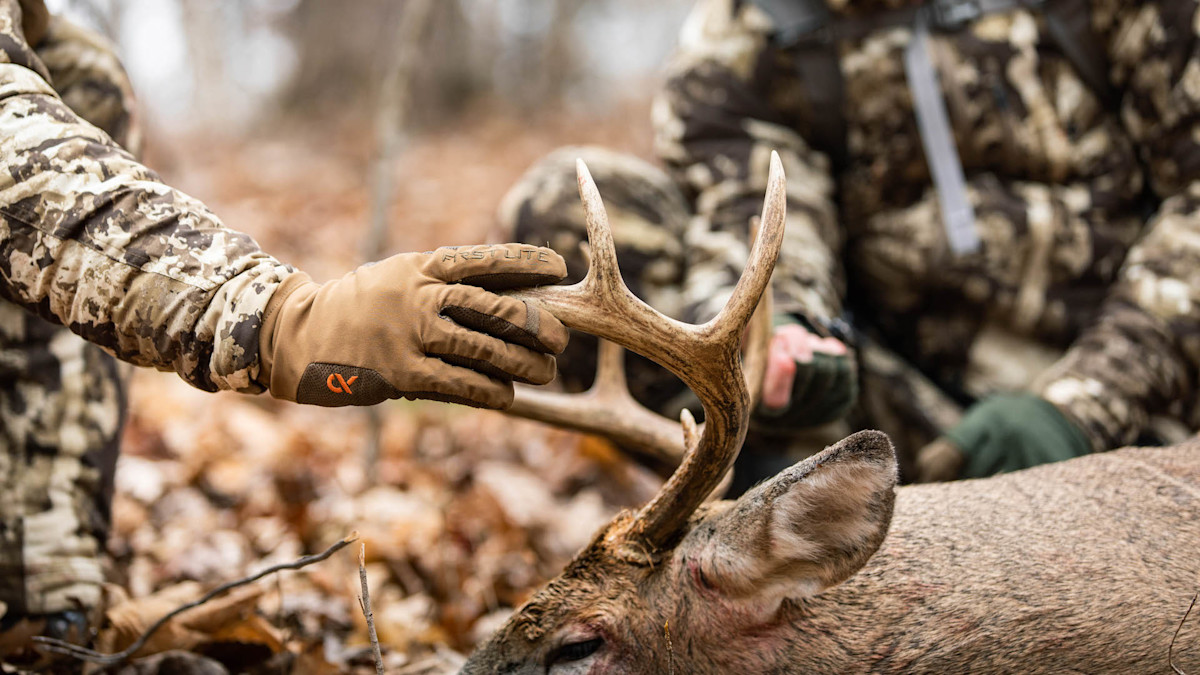
Almost every traditional shotgun-only state now allows hunters to shoot straight-wall rifles, but slug guns remain popular among deer hunters across the Midwest and East. Slugs became mandated as a safety measure in populated areas because they cannot travel as far and are slower than necked centerfire cartridges. But that doesn’t lessen their lethality, so long as your shot is taken at an ethical distance.
The two slug types most commonly used by hunters are rifled, which can be shot out of any smoothbore shotgun, and sabot (pronounced say-bo), a projectile that requires a specialized rifled shotgun barrel or choke to draw optimal performance from the load. Rifled slugs can also be shot out of a rifled barrel, but there’s no advantage to using one over a smoothbore.
Both rifled and sabot slugs are capable of killing deer at shorter ranges. Shooting a rifled slug much past 150 yards is not advisable, as its trajectory drops off quickly. They are inexpensive loads and plenty accurate if you hunt tight cover. Sabots are more costly but shoot flatter and can reach out to 200 yards. So, there are benefits and drawbacks to shooting each load. Here’s a closer look at which slug makes the most sense for you.
The Mathematics of Slug Trajectory
Before delving into the drop—the effect gravity has on a projectile once it exits the muzzle—of rifled and sabot slugs, know that to draw the most from your slug gun, you need to mount a quality optic to your shotgun, sight the gun in like you would a rifle, and spend time at the range practicing. That way, when a buck or doe steps into the open and presents a shot, you can range it, and place the crosshairs exactly where they need to be to anchor the deer.
Rifled slugs drop faster than sabots because they are heavier and slower, which is why you can’t kill a deer with one at an extended range. A typical 12-gauge rifled slug weighs 1 or 1⅛ ounces as opposed to sabots that range in weight from 250 to 376 grains—less than an ounce. Sabots are lighter and faster, thus they fly farther.
From previous ballistics work, I know that a 3-inch, 1-ounce (438 grains) rifled slug with a 1,700 fps muzzle velocity will drop 4.4 inches at 125 yards if the gun has a 100-yard zero. At 150 yards, that drop increases to 11.3 inches and is 34.3 inches at 200 yards—a nearly 3-foot drop. A 3-inch, 300-grain sabot with a muzzle velocity of 2,000 fps only drops 1.3 inches at 125 yards with a 100-yard zero. Shoot out to 150 yards, and you still only need to account for 4.4 inches of drop. At 200 yards, the drop is 13 inches.
Outdoor Life shooting editor Jim Carmichael also found that sabots tended to group tighter than rifled slugs during a comprehensive slug test in 2008. Carmichael tested 27 different slugs, firing over 1,000 rounds from a 50-pound remote-operated slug gun. The best three-shot rifled slug group at 100 yards was 6.819 inches from a trio of 2¾-inch 20-gauge Winchester rounds. The best sabot group came from a 2¾-inch 12-gauge Lightfield load and measured only 2.062 inches–over three times tighter than the rifled slug.
20-Gague vs. 12-Gauge Slugs
The perception that hunters will have more killing power at their disposal if they select a 12-gauge is true, but a 20-gauge can get the job done, particularly sabots. All of the ballistics experts I have spoken with over the years agreed that a 20-gauge sabot is capable of killing a whitetail at 200 yards with a well-placed shot, though the data tells you it’s safer to keep shooting distances at 150 yards.
For instance, Hornady’s popular 250-grain 20-gauge SST sabot slug produces 1,200 foot/pounds of energy at 100 yards, 983 foot-pounds (ft.-lbs.) at 150 yards, but then tails off to 815 ft-lbs at 200. Many state DNRs recommend 1,000 ft.-lbs. of energy at the target to anchor a deer, but there’s no data that has shown that to be the benchmark. But the Hornady test results do show a precipitous drop off in energy at 200, so it’s up to the individual hunter to decide if that’s a shot worth taking. And consider that the Hornady 300-grain 12-gauge SST sabot generates 1,793 ft.-lbs. of energy at 100 yards, 1,463 ft.-lbs. at 150, and 1,198 ft.-lbs. at 200, making a longer shot more reasonable.
Rifled slugs generate less energy at the target than sabots. Federal’s 328-grain Power-Shok 20-gauge produces 1,190 ft.-lbs. at 50 yards and just 830 ft.-lbs. at 100. The 12-gauge 438-grain Power-Shok has 1,746 ft.-lbs. of energy at 50 yards and 1,262 ft.-lbs. at 100.
Also, note that the 12-gauge slugs are likely to produce more felt recoil—depending on the weight of your gun—than the 20-gauge. So you’ll have to decide if that extra sting to your shoulder is worth the added energy a 12-gauge load can produce.
So, Rifled or Sabot?
Deciding which load to buy depends on where you hunt and how much money you want to spend—a box of five sabots can cost more than $20, while rifled slugs go for as cheap as $6. If you keep shots inside 100 yards, there is only a slight advantage in shooting a sabot in terms of drop and energy on target. But push that range just 25 more yards, and the sabot begins to separate itself from the rifled slug.
So, if you hunt a creek bottom from a treestand where shots are close, the rifled slug will get the job done. However, if you hunt from a box blind on a field edge and a buck steps out at 150 yards, the sabot is a much better choice.
Feature image via Captured Creative.





Conversation